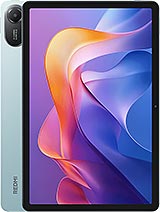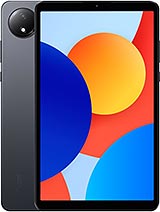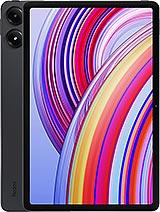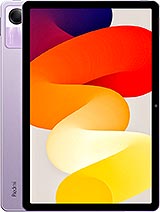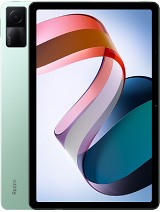Redmi Parts - Tablets Repair Parts
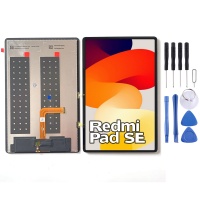
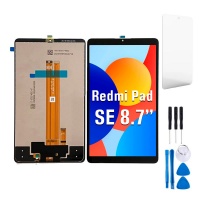


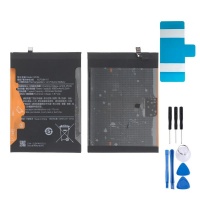
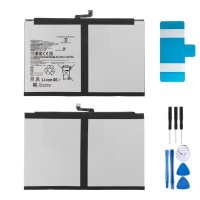
- Discover the World of Spare Parts for Redmi Tablets at iLevante.com ⚙️
- Getting to Know Your Redmi Tablet: Popular Series and Models 📱
- In Detail: Redmi Pad SE and Redmi Pad SE 8.7
- Common Problems with Redmi Tablets: When Do You Need a Spare Part? ⚠️
- Screen Failures: Cracks, Dead Pixels, and Touch Problems 💔
- Faulty Battery: Reduced Lifespan and Unexpected Shutdowns 🔋
- Problems with the Charging Port and Connectivity 🔌
- Other Hardware Failures: Speakers, Cameras, Buttons, and More 🔩
- Essential Guide to Spare Parts for Your Redmi Tablet 🛠️
- Screens for Redmi Tablets: Technologies and Options ✨
- Batteries for Redmi Tablets: Power and Reliability ⚡
- OEM Batteries without Logo: Original Quality Explained
- Other Key Spare Parts for Redmi Tablets 🧩
- Software vs. Hardware: MIUI/HyperOS Problems That Look Like Physical Faults 💻
- Basic Repair Guide for Your Redmi Tablet 🧰
- How to Replace Your Redmi Tablet's Screen (General Steps) 🖼️
- How to Replace Your Redmi Tablet's Battery (General Steps) 🔋🔄
- Find the Best Spare Parts for Your Redmi Tablet at iLevante.com 🚀
Discover the World of Spare Parts for Redmi Tablets at iLevante.com ⚙️
Redmi, a sub-brand of the renowned Xiaomi, has gained notable popularity in the competitive tablet market thanks to its philosophy of offering devices with excellent value for money. These tablets are appreciated for their solid performance and modern features, making them an attractive option for a wide range of users. However, like any electronic device, over time and with use, problems or accidents can arise that require repair. It is at this point that iLevante.com becomes your strategic ally.
At iLevante.com, our mission goes beyond being a simple component supplier. We seek to empower our users with the necessary knowledge to understand the problems that may affect their Redmi tablets and offer them the appropriate solutions. We understand that many users prefer to repair their devices rather than incur the expense of a complete replacement, especially when it comes to brands that, like Redmi, focus on accessibility. A timely and well-done repair is not only more economical but also a more sustainable practice.
The quality of spare parts is fundamental to the success of any repair. Using low-quality parts can compromise the optimal functioning of your tablet, reduce its lifespan, and even cause greater damage to other components. Therefore, at iLevante.com, we are committed to offering spare parts that meet high standards, ensuring that your Redmi tablet will work like new again. By providing expert information along with our products, we aim to build trust and differentiate ourselves, becoming your go-to source for everything related to Redmi tablet repairs. An informed customer is a customer पुलिसthe ability to make the best decisions for their device.
Getting to Know Your Redmi Tablet: Popular Series and Models 📱
Xiaomi, through its Redmi brand, has diversified its offering to include tablets that follow the same line of offering advanced technology at competitive prices. The brand's main tablet line is known as "Redmi Pad". These devices are designed to meet the needs of students, professionals, and home users looking for a versatile tool for entertainment, productivity, and communication.
Within the Redmi Pad family, we find several models that have captured the market's attention. It is important for users to correctly identify their tablet model before searching for spare parts, as parts are not usually interchangeable between different versions due to variations in design, size, and internal components. This precise identification is the first step towards a successful repair.
In Detail: Redmi Pad SE and Redmi Pad SE 8.7
Two of the most recent and popular models that illustrate Redmi's proposition in the tablet segment are the Redmi Pad SE and its more compact variant, the Redmi Pad SE 8.7. Although they share the "SE" designation, they have significant differences that users should be aware of, especially when looking for spare parts.
Redmi Pad SE (11-inch):
- Launch and Positioning: Introduced in August 2023, the Redmi Pad SE is positioned as an affordable tablet within the Redmi Pad line, ideal for multimedia consumption and everyday tasks.
- Screen: It features an 11.0-inch IPS LCD screen with a resolution of 1200 x 1920 pixels (approximately 207 ppi). It offers a 90Hz refresh rate for a smoother visual experience and a typical brightness of 400 nits.
- Processor: It is powered by the Qualcomm Snapdragon 680 4G (6 nm) chipset, which provides a balance between performance and energy efficiency.
- RAM and Storage: Available in various configurations, including 4GB, 6GB, or 8GB of RAM, and 128GB or 256GB of internal storage, expandable via microSDXC card.
- Battery: It incorporates an 8000 mAh Li-Po battery. It supports 10W or 18W charging (Quick Charge 3.0 according to some sources). The specific battery model for this tablet is BN81.
- Cameras: It has an 8 MP (f/2.0) rear camera and a 5 MP (f/2.2) front camera, suitable for video calls and casual photography.
- Software: Originally launched with Android 13 and the MIUI Pad 14 customisation layer, it is upgradeable to more recent versions of Android and HyperOS.
- Others: Its quad stereo speakers with Dolby Atmos support and the presence of a 3.5mm audio jack connector are notable features.
Redmi Pad SE 8.7-inch:
- Launch and Positioning: Announced in July 2024 and available from August of the same year, this version aims to attract users who prefer a more compact and portable format without sacrificing essential functionality.
- Screen: It features an 8.7-inch IPS LCD screen with a resolution of 800 x 1340 pixels (approximately 179 ppi). It also has a 90Hz refresh rate and HBM (High Brightness Mode) brightness of 600 nits, protected by Corning Gorilla Glass 3.
- Processor: It is equipped with the Mediatek Helio G85 (12 nm) chipset, geared towards efficient performance for this device size.
- RAM and Storage: It offers options of 4GB or 6GB of RAM, with 64GB or 128GB of internal storage (eMMC 5.1), also expandable via microSDXC.
- Battery: Its battery is 6650 mAh, with support for 18W charging in the international version (10W in India). The battery model for this tablet is BN82.
- Cameras: It maintains a similar configuration to its larger sibling, with an 8 MP (f/2.0) rear camera and a 5 MP (f/2.2) front camera.
- Software: It comes with Android 14 and Xiaomi's HyperOS interface.
- Others: It includes stereo speakers, a 3.5mm jack, and is available in Wi-Fi and 4G LTE versions.
The existence of these two variants under the same "SE" umbrella demonstrates Redmi's strategy to cover different market niches within its budget range. Whilst the 11-inch version is ideal for multimedia consumption at home or for tasks that benefit from a larger screen, the 8.7-inch version prioritises portability, being easier to handle with one hand and to carry around. This difference in usage pattern can influence the type of wear and tear or damage each device might sustain. For example, a smaller tablet frequently carried декоративrs might have a slightly higher risk of drops or charging port wear due to constant use with external batteries.
It is crucial to highlight that, despite the similarity in name, spare parts such as screens, batteries (BN81 vs BN82), and casings are not interchangeable between the 11-inch Redmi Pad SE and the 8.7-inch Redmi Pad SE due to their obvious dimensional and internal design differences. Therefore, when purchasing a spare part from iLevante.com, it is imperative to verify the exact model of your tablet to ensure compatibility.
Common Problems with Redmi Tablets: When Do You Need a Spare Part? ⚠️
Redmi tablets, like any electronic device, can experience problems over time. Some can be resolved with software adjustments, but others will inevitably require the replacement of a hardware component. Knowing how to distinguish between a software failure and a hardware failure is the first step towards an effective and economical solution. Pay attention to persistent physical symptoms and abnormal behaviours that are not resolved by reboots or updates.
Screen Failures: Cracks, Dead Pixels, and Touch Problems 💔
The screen is one of the most exposed and vital components of a tablet. Damage to it can render the device practically unusable.
Common causes of screen damage:
- Physical impacts: Drops and knocks are the most frequent cause of broken or cracked screens.
- Excessive pressure: Applying too much force to the screen, for example, when carrying it in a tight backpack, can damage it.
- Liquid damage: Contact with water or other liquids can cause short circuits or corrosion in the internal components of the screen.
- Wear of the touch layer: With very prolonged use, or if the screen suffers deep scratches, touch sensitivity can be affected.
Symptoms of a faulty screen:
- Visible cracks, chips, or complete shattering of the glass.
- Dead pixels (black dots that do not light up) or stuck pixels (dots of a fixed colour: white, red, green, or blue).
- Appearance of vertical or horizontal lines, strange coloured patches, or constant flickering of the image.
- A completely black screen or no image displayed, even though the tablet seems to be on (notification sounds are heard, it vibrates, etc.).
- Problems with touch response: areas of the screen that do not detect a finger, touches registered in incorrect places (ghost touches), or a total lack of response to touch.
- Abnormally low brightness, distorted or "washed-out" colours that cannot be corrected through system settings.
Understanding the probable cause of the damage helps not only to better describe the problem when seeking help or spare parts but also to take preventive measures for the future, such as using screen protectors and cases.
Faulty Battery: Reduced Lifespan and Unexpected Shutdowns 🔋
The battery is the heart of your tablet's portability. Over time, all rechargeable batteries degrade and lose capacity.
Causes of battery degradation:
- Natural ageing: Each charge and discharge cycle (charging the battery and then using it) gradually contributes to the wear of its chemical components. Li-Po and Li-Ion batteries have a limited number of optimal cycles.
- Extreme temperatures: Exposing the tablet to excessive heat (direct sunlight, leaving it in a car солнце) or intense cold accelerates battery degradation.
- Charging habits: Keeping the tablet connected to the charger at 100% for very long periods, or using non-original chargers of poor quality or with inadequate voltages/amperages, can stress the battery.
- Frequent deep discharges: Regularly depleting the battery completely (to 0%) can damage the lithium cells.
- Physical damage: Although less common without a severe impact on the tablet, a direct blow to the battery area could damage it internally.
Signs you need a new battery:
- Drastically reduced battery life: The tablet discharges much faster than when it was new, requiring frequent charges.
- Unexpected shutdowns: The device suddenly turns off, even when the battery indicator shows there is still charge remaining (e.g., it turns off at 30% or 40%).
- Only works when plugged in: The tablet only turns on or stays operational if it is connected to the charger.
- Slow or incomplete charging: The battery takes much longer than normal to charge or never reaches 100%.
- Erratic battery percentage: The charge indicator декоративs sharply (e.g., from 70% to 20% in a few minutes, or goes up and down Bedeutungslos).
- Physical swelling: If you notice the tablet casing bulging, or the screen lifting at the edges, it is a clear and dangerous sign that the battery is swollen. In this case, stop using the tablet immediately and replace the battery urgently, as a swollen battery poses a risk of fire or explosion.
- Excessive overheating: It is normal for the tablet to heat up a little during charging or intensive use, but excessive and constant heat can indicate a problem with the battery.
Identifying these symptoms декоратив is crucial, not only to recover the tablet's functionality but also for safety in cases of swelling.
Problems with the Charging Port and Connectivity 🔌
The charging port (usually USB-C on modern Redmi tablets) is a component subjected to a lot of mechanical stress from constantly connecting and disconnecting the cable.
Symptoms of a damaged charging port:
- Does not charge or charges intermittently: The tablet does not detect the charger, or you have to move the cable into a certain position for it to start charging.
- Loose connection: The USB cable does not fit firmly into the port, feels loose, or disconnects easily.
- Need to try several cables/chargers: If only a specific cable or in a very specific position works, it is likely that the port is damaged and not the cables.
- Visible physical damage: Inspect the inside of the port with a torch. Look for bent or broken pins, accumulated dirt or lint (which can sometimes be carefully cleaned with a non-metallic toothpick and compressed air), or rust/corrosion if there has been exposure to moisture.
- Not recognised by PC: When connecting the tablet to the computer, it does not detect it or the connection is unstable, preventing file transfer.
- Overheating in the port area: Excessive heat around the charging port whilst connected may indicate a short circuit or poor contact.
A faulty charging port can render your tablet unusable once the battery runs out. Fortunately, in many models, this component is replaceable.
Other Hardware Failures: Speakers, Cameras, Buttons, and More 🔩
In addition to the most common problems, other components can fail:
- Speakers: Distorted sound, crackling, very low volume, or total absence of sound. Always check the volume settings first and ensure it is not in silent mode.
- Microphone: People cannot hear you during video calls, or voice recordings have very low, distorted, or noisy sound.
- Cameras (front/rear): The camera app does not open, closes unexpectedly, shows a black screen, or photos and videos are blurry (first rule out a dirty lens), with strange spots or colour artefacts. A broken or severely scratched camera lens will also require replacement.
- Buttons (power, volume): A button that does not respond when pressed, is stuck, or performs incorrect actions (e.g., pressing volume up декоративs the volume down).
- Internal Flex Connectors: These are flat, delicate cables that interconnect the different internal components of the tablet (screen to motherboard, buttons to motherboard, etc.). They can be damaged by a knock, a previous poorly executed repair, or simple wear and tear. A damaged flex cable can cause the associated component (screen, touch, buttons, charging port) to stop working or work erratically. For example, a damaged inductor (like the L607 in some Xiaomi models) on the motherboard, connected via these flex cables, can prevent charging.
- Motherboard: This is the brain of the tablet. Its failures are the most complex and costly to repair. Symptoms can be varied and often overlap with other problems: the tablet does not turn on at all (and it's not the battery or the port), constant random reboots, frequent freezes, simultaneous failures of multiple functions (Wi-Fi, Bluetooth, sound, charging, etc.), or extreme overheating without apparent cause. Motherboard repair usually requires specialised knowledge and tools.
- SIM/SD Tray: A broken tray, one that does not eject correctly, or one that prevents the tablet from recognising the SIM or microSD card.
It is important to consider that the same symptom can have several causes. For example, a tablet that does not turn on could have a dead battery, a faulty charging port, a broken power button, a disconnected flex cable, or, in the worst-case scenario, a motherboard failure. Therefore, a careful diagnosis, starting with the simplest checks (trying another charger, visually inspecting the port), is essential before deciding which spare part to purchase. The compact and often unibody design of modern tablets can make repairs a challenge for the average user, as it involves handling small and delicate components.
Essential Guide to Spare Parts for Your Redmi Tablet 🛠️
Once a hardware problem has been identified, the next step is to find the right spare part. At iLevante.com, we offer a wide range of components to restore full functionality to your Redmi tablet. Below, we detail the most in-demand spare parts and key considerations when choosing them.
Screens for Redmi Tablets: Technologies and Options ✨
The screen is, without a doubt, the component we interact with most. A broken or faulty screen can render an otherwise functional tablet unusable. Fortunately, it is one of the most common spare parts, and its replacement can revitalise your device.
When searching for a replacement screen for your Redmi tablet, you will likely encounter various technologies. It is important to know their differences:
- TFT LCD (Thin-Film Transistor Liquid Crystal Display): This is a basic and common LCD technology, generally more economical.
- Pros: Cost-effective, good readability in direct sunlight in some cases, response times can be fast.
- Cons: More limited viewing angles (colours and brightness may change if not viewed декоратив-on), lower contrast ratio (blacks may appear декоративwhat greyish), and can consume more energy than OLED technologies.
- IPS LCD (In-Plane Switching Liquid Crystal Display): This is an advanced type of TFT LCD. The Redmi Pad SE and SE 8.7 tablets, for example, use factory-fitted IPS LCD screens.
- Pros: Offer significantly better viewing angles and more accurate and consistent colour reproduction than standard TFT TN panels. Brightness is usually good.
- Cons: Response times can be a bit slower than some TFT TN panels, and the contrast does not reach OLED screen levels. Energy consumption can be a factor, as they sometimes require more powerful backlighting.
- INCELL: In this technology, the touch layer (digitiser) is integrated directly into the LCD cell structure, allowing for thinner screens. It is common to find INCELL replacements in the aftermarket, and some budget Android tablets may use "IPS Incell" screens.
- Pros: Potentially thinner. Some good quality INCELL screens can offer excellent image quality and vibrant colours. In certain cases, they may have lower energy consumption.
- Cons: The quality of aftermarket INCELL screens can vary декоративно. Some may have duller colour tones, lower contrast, narrower viewing angles, and a touch response with some delay. Sometimes, the bottom bezel of these replacement screens can be slightly wider than the original.
- OLED (Organic Light-Emitting Diode): In OLED screens, each pixel emits its own light, eliminating the need for a separate backlight.
- Pros: Truly deep blacks (black pixels simply turn off), resulting in "infinite" contrast. Very vivid and saturated colours with a wide colour gamut. Excellent viewing angles. Extremely fast response times. Can be thinner and more flexible. Potentially more energy-efficient when displaying dark content.
- Cons: More expensive to produce. Susceptible to "burn-in" or image retention (a permanent ghost image if static elements are displayed for a long time at high brightness). Their lifespan can be somewhat shorter, especially for blue sub-pixels. Sometimes, the maximum brightness in very white scenes can be lower than that of LCDs.
- AMOLED (Active-Matrix Organic Light-Emitting Diode): This is a variant of OLED technology that uses an active matrix of thin-film transistors (TFT) to control each pixel individually. This improves response speed and efficiency.
- Pros: Virtually the same as OLED (contrast, colours, angles), but with even faster and more efficient pixel control. This can translate into higher refresh rates and better energy management.
- Cons: Similar to OLED (cost, risk of burn-in, lifespan). Readability in intense direct sunlight can be a challenge for some AMOLED screens.
- Original Screens (OEM Refurbished / Service Pack): These are screens manufactured directly by the original device producer (or for them under their strict specifications), or they are screens recovered from original devices and professionally refurbished to ensure their perfect condition.
- Pros: Offer display quality, colour reproduction, touch response, and physical fit closest (or identical) to the component that came декоратив with your tablet.
- Cons: Usually the most expensive option in the spare parts market.
Which screen to choose for your Redmi Tablet? The Redmi Pad SE and SE 8.7 tablets use factory-fitted IPS LCD screens. When looking for a replacement:
- If OLED/AMOLED options are offered for these models (which is uncommon for entry-level tablets but could exist in the spare parts market), you will need to weigh their advantages (mainly superior contrast) against their disadvantages (higher cost, possible risk of burn-in).
- Aftermarket INCELL screens can be an economical alternative. However, it is crucial to ensure the quality of the supplier. At iLevante.com, we strive to select INCELL replacements that offer a good balance between price and performance.
- Good quality IPS LCD screens (such as originals or high-quality OEM equivalents) are a safe option to maintain a user experience very similar to the original one on your Redmi tablet.
To help you make an informed decision, we have prepared a comparative table with the key features of these technologies:
| Technology | Colour Quality/Contrast | Viewing Angles | Brightness | Energy Efficiency | Durability (Risk of Burn-in) | Relative Cost |
|---|---|---|---|---|---|---|
| TFT LCD (TN) | Moderate / Low | Limited | Variable, can be good | Moderate to High | Low risk of burn-in | Low |
| IPS LCD | Good / Moderate-High | Wide | Good to Very Good | Moderate (may require more backlighting) | Low risk of burn-in | Medium |
| INCELL (Aftermarket) | Variable (from decent to low) / Variable | Variable | Variable | Potentially good | Low risk of burn-in | Low to Medium |
| OLED | Excellent / Infinite (pure blacks) | Excellent | Good, can be lower on bright whites | Good (especially with dark themes) | Risk of burn-in | High |
| AMOLED | Excellent / Infinite (pure blacks) | Excellent | Good to Very Good | Very Good (individual pixel control) | Risk of burn-in | High to Very High |
| Original / OEM | As per original specification (generally Good to Excellent) | As per original specification (generally Wide) | As per original specification | As per original specification | As per original technology (low for LCD, present for OLED) | Very High |
Note: The features of aftermarket INCELL screens can vary significantly between manufacturers. The table presents a generalisation.
Batteries for Redmi Tablets: Power and Reliability ⚡
A battery in good condition is essential to enjoy the portability and battery life that a tablet offers. If your Redmi Pad shows signs of a depleted battery, a replacement can give it hours of use back.
Identifying the correct battery for your Redmi Pad:
Compatibility is absolutely crucial when choosing a replacement battery. Pay attention to the following details:
- Battery Model: Each tablet uses a specific battery model, identified by a code (e.g., BN81). This code must match exactly.
- Redmi Pad SE (11-inch): Uses battery model BN81, with a capacity of 8000mAh.
- Redmi Pad SE 8.7-inch: Uses battery model BN82, with a capacity of 6650mAh.
- Redmi Pad (original 2022 model): Also uses battery model BN81 (8000mAh).
- Capacity (mAh - milliampere-hours): Indicates the "amount" of energy the battery can store. The replacement should have an equal or very similar capacity to the original to maintain the expected battery life.
- Voltage (V - volts): Must match the voltage of the original battery. For Li-Ion or Li-Po batteries used in tablets, this is usually 3.7V to 3.87V.
- Battery Type: Generally Lithium Polymer (Li-Po) or Lithium Ion (Li-Ion) in modern mobile devices.
- Visual Inspection: Always compare the shape, size, location, and type of connector of your old battery with the images and specifications of the replacement battery before purchasing.
OEM Batteries without Logo: Original Quality Explained
In the spare parts market, it is common to find batteries labelled "OEM" that do not carry the original device brand's logo (in this case, Redmi or Xiaomi). This can raise doubts for some users, but it is important to understand what it means:
- What are OEM batteries? OEM stands for "Original Equipment Manufacturer". An OEM battery is one manufactured by a company that strictly follows the technical specifications, quality standards, and production processes established by the original device manufacturer (Xiaomi/Redmi). In some cases, it may even be the same manufacturer that produces the batteries installed in new tablets on the assembly line.
- Quality of OEM batteries: Major brands like Xiaomi impose strict quality controls on their OEM suppliers. This ensures that an OEM battery, even without the brand's logo, is designed to offer performance (real capacity, stable voltage, charge cycle durability) and safety levels comparable or identical to those of the battery that originally came with your tablet.
- Why do some not have a logo? There are various commercial or distribution agreement reasons why these high-quality OEM batteries are marketed without the final device brand's logo. This may be to avoid brand conflicts, for licensing issues, or simply because they are intended for the spare parts market through different channels. The absence of a logo does not in itself imply lower quality if the battery comes from a reputable OEM manufacturer that meets the original specifications. At iLevante.com, we ensure the origin and quality of these batteries.
- Advantages of OEM batteries without a logo: They usually have a more competitive price than "original" batteries that could be purchased (if available to the general public) directly from the device manufacturer, but they offer quality, reliability, and safety far superior to generic batteries of unknown origin or low quality that flood some markets.
Explaining this clearly is fundamental for us at iLevante.com, as we want our customers to buy with complete confidence, knowing that an OEM battery without a logo can be an excellent option to restore their Redmi tablet's battery life with the same quality as the original.
Below is a table with the battery specifications for the Redmi Pad SE and Redmi Pad SE 8.7 models:
| Tablet Model | Battery Model | Nominal Capacity (mAh) | Nominal Voltage (V) | Type |
|---|---|---|---|---|
| Redmi Pad SE (11-inch) | BN81 | 8000 mAh | ~3.85V - 3.87V | Li-Po |
| Redmi Pad SE 8.7-inch | BN82 | 6650 mAh | ~3.85V - 3.87V | Li-Po |
| Redmi Pad (Original 2022) | BN81 | 8000 mAh | ~3.85V - 3.87V | Li-Po |
Note: Always verify the exact model of your tablet and battery before making a purchase. Voltages may have slight nominal variations.
Other Key Spare Parts for Redmi Tablets 🧩
Beyond screens and batteries, your Redmi tablet is composed of many other elements that may require replacement:
- Charging Ports (Charging Board / Dock Connector): If your tablet does not charge correctly, the data connection fails, or the USB cable does not fit well, you will likely need to replace the charging port module. This component usually comes on a small printed circuit board (PCB) that includes the USB-C connector and sometimes other elements like the main microphone.
- Flex Cables: These are flat, flexible ribbons crucial for communication between different internal parts of the tablet, such as the screen and the motherboard, the buttons and the motherboard, or the charging board and the main board. They are delicate components that can be damaged during a drop, a previous repair, or by simple wear and tear. A fault in a flex cable can manifest as a component декоратив working (e.g., the screen shows no image, the touch does not respond, the buttons do not act).
- Camera Modules (Front and Rear): If your photos are blurry (and it's not due to a dirty lens), the camera app constantly fails, or the camera has suffered physical damage, you can replace the entire camera module.
- Back Covers and Housings: To restore the aesthetics of your tablet after a fall or if the casing is badly scratched or bent. A casing in good condition is also important for the internal protection of components.
- Buttons (Power, Volume) and their Flex Cables: Physical buttons can stop working due to wear, or the flex cable connecting them to the motherboard can be damaged, preventing their correct operation.
- SIM/SD Trays (SIM Card Tray): These small parts can easily break or be lost, preventing the use of SIM cards (on LTE models) or microSD memory cards.
- Speakers (Earpiece & Loudspeakers) and Microphones: If you experience audio problems that are not resolved by cleaning the grilles or with software adjustments (distorted sound, low volume, or the microphone does not pick up your voice), replacing the specific component may be the solution.
- Adhesive Stickers: After opening a tablet for a repair (especially to replace the screen or back cover), it is essential to use new adhesives specific to electronics. These ensure a proper seal, maintaining the structural integrity of the device and helping to prevent dust and moisture ingress.
It is important to understand that a tablet's components are interconnected. A problem in one component, such as a damaged flex cable, could manifest as a failure in another, such as the screen. Therefore, an accurate diagnosis is key. By offering a wide range of these "other spare parts", at iLevante.com we not only demonstrate the breadth of our catalogue but also educate the user about the modularity and repairability of their device. This can encourage repairs that might not have been considered possible, such as fixing a simple stuck button or a faulty charging port, thereby extending the life of the tablet декоративно and sustainably.
Software vs. Hardware: MIUI/HyperOS Problems That Look Like Physical Faults 💻
Before assuming your Redmi tablet has a hardware problem and needs a spare part, it is crucial to consider whether the fault could be software-related. Redmi tablets use Xiaomi's customisation layer, which has evolved from MIUI for Pad to HyperOS on more recent models like the Redmi Pad SE and SE 8.7. Although these operating systems are designed to optimise the user experience, they can sometimes present errors, bugs, or incompatibilities that mimic hardware failures.
How software (MIUI / HyperOS) can cause problems that simulate hardware faults:
- Extreme Slowness or Freezing (Lag/Freezing): An operating system overloaded by many applications, affected by software errors, with low available storage space, or even after a problematic update, can cause the tablet to run extremely slowly or freeze. This might lead the user to mistakenly think the processor is failing or that the RAM is insufficient. Cases of lag and performance issues have been reported after some updates to HyperOS. It is normal for the device to run a bit slowly right after the first boot or after a major OTA update, whilst the system finishes configuring itself.
- Rapid Battery Drain: Poorly optimised applications consuming excessive resources in the background, system processes getting "stuck", or simple bugs in the operating system can drain the battery much faster than normal. This could lead you to believe the physical battery is degraded and needs replacement, when in fact the problem is software-related.
- Touch Unresponsiveness: Errors in the system software or screen drivers can cause the touchscreen to not respond, respond intermittently, or register erratic touches ("ghost touches"). These symptoms are very similar to those of a physically damaged digitiser (the touch layer of the screen).
- Unexpected Reboots or Shutdowns: Critical operating system failures or serious conflicts between applications can cause the tablet to reboot or shut down декоратив without warning. These symptoms are also characteristic of hardware problems such as a faulty battery or motherboard failures.
- Camera Problems: The camera application may not open, close unexpectedly, show a black screen instead of an image, or freeze. These problems do not always indicate a defect in the physical camera module; they are often caused by software errors or conflicts.
- Charging Problems: Although it is less common for charging problems to be purely software-related (they are usually more linked to the port, cable, charger, or battery), in theory, a serious error in the operating system's power management could interfere with the charging process.
- Connectivity Failures (Wi-Fi, Bluetooth): Difficulties connecting to Wi-Fi networks, frequent disconnections, or problems pairing Bluetooth devices can be due to errors in the operating system's network drivers or poor configuration, and not necessarily a faulty Wi-Fi/Bluetooth chip.
Basic software diagnostic steps (Technician's perspective before replacing hardware):
From a repair technician's perspective, before opening a device or ordering a spare part, software solutions should always be exhausted. These steps can save you time and money:
- Reboot the tablet: This is the first and simplest step. A reboot can resolve temporary issues, close erratic processes, and free up memory.
- Check for software updates (OTA): Ensure your tablet has the latest official version of HyperOS or MIUI installed. Updates usually include fixes for known bugs and performance improvements. However, it is important to note that sometimes a new update can introduce new problems. If the problem started right after an update, this could be the cause.
- Free up storage space: If the tablet's internal storage is almost full, performance can degrade significantly. Delete unnecessary files, duplicate photos/videos (after backing them up), and uninstall applications you do not use.
- Clear application or system cache: The accumulation of data in the cache can sometimes cause performance issues or errors in specific applications. You can clear the cache of an individual app or the system cache partition (if the option is available in your tablet's recovery mode).
- Review recent applications: If the problems started after installing a new application, try uninstalling it to see if the issue is resolved.
- Safe Mode: If your Redmi tablet allows booting into Safe Mode (this varies depending on the MIUI/HyperOS version), try it. Safe Mode loads the operating system with only essential factory applications, disabling third-party apps. If the tablet works correctly in Safe Mode, it is very likely that one of the applications you have installed is causing the problem.
- Factory Reset: This is the last resort at the software level, as it will erase all your personal data, installed applications, and settings, returning the tablet to its original factory state. It is essential to perform a full backup of your important data before proceeding. A factory reset can resolve persistent software problems and system data corruption.
It is important to be aware that software updates, although necessary, can be a double-edged sword. Whilst they often fix problems, they can sometimes introduce new bugs or compatibility issues, especially in the early versions of a new customisation layer like HyperOS. If a serious problem starts immediately after an update, it may be prudent to seek information in user forums or wait for a corrective patch before assuming a hardware failure. By including this information, at iLevante.com we not only help you find the correct spare part when necessary, but we also guide you to avoid unnecessary expenses if the problem can be resolved at the software level. This honesty and comprehensive approach reinforce our position as your trusted ally.
Basic Repair Guide for Your Redmi Tablet 🧰
If you have determined that your Redmi tablet needs a hardware replacement and you feel confident and skilled enough to perform the repair yourself, this basic guide will provide you with an overview of the steps involved in the most common replacements. However, it is essential to stress that DIY (Do It Yourself) repairs carry risks: they can void your device's remaining warranty and, if not done carefully, could cause additional damage. We recommend this path only if you have some technical experience, patience, and the right tools. It is always advisable to search for specific video tutorials for your exact Redmi tablet model before starting.
Essential tools for tablet repair:
- Precision screwdriver kit: Including small Phillips head bits, and possibly Torx or Pentalobe depending on the specific model.
- Plastic opening tools (plectrums, spudgers): Essential for separating casings and components without scratching or damaging the plastic or metal.
- Suction cup: Useful for lifting the screen or back cover once the adhesive has softened.
- Fine-tipped tweezers (preferably anti-static): For handling small connectors, screws, and other tiny components.
- Heat gun or hairdryer: To apply moderate heat and soften the adhesive holding the screen or back cover. Must be used with extreme caution to avoid overheating and damaging other components.
- Double-sided adhesive tape specific for electronics or liquid adhesive (e.g., B-7000, T-7000): Necessary to reseal the screen or back cover after the repair.
- Anti-static wrist strap: To protect sensitive electronic components from electrostatic discharge (ESD) from your body.
- Gloves (optional): To avoid leaving fingerprints on internal components or the new screen.
- Magnetic screw mat (optional but highly recommended): Helps to organise the small and numerous screws, preventing them from getting lost or mixed up.
How to Replace Your Redmi Tablet's Screen (General Steps) 🖼️
Screen replacement is one of the most common repairs. The general steps are described here, but remember they can vary slightly depending on the specific model of your Redmi tablet.
Precautions and preparation:
- Work environment: Choose a clean, well-lit, quiet place with enough space to work comfortably.
- Electrical safety: Turn off the tablet completely and disconnect it from any charger or cable.
- Backup: If the tablet still turns on and the screen is partially functional, try to back up your important data.
- Spare part verification: Ensure you have the correct replacement screen for your Redmi tablet model and all necessary tools декоратив.
- Disconnect the battery!: As soon as you have access to the inside of the tablet, the first crucial step is to disconnect the battery from the motherboard. This prevents accidental short circuits that could permanently damage components.
Simplified step-by-step guide:
- Apply (moderate) heat: If the screen is glued to the frame (most common), use a heat gun at a low temperature or a hairdryer to gently and evenly heat the edges of the screen. This will soften the adhesive. Do not concentrate heat on one spot for too long.
- Lift the screen: Place a suction cup near one of the screen edges (preferably one that is not too damaged, if applicable) and gently pull upwards to create a small gap between the screen and the frame.
- Insert opening tools: In the created gap, insert a thin plastic plectrum or a flat opening tool. Carefully slide it around the entire perimeter of the screen, cutting the adhesive and releasing any retaining clips. You may need to insert several plectrums to keep the screen separated as you go.
- Open carefully: Once the screen is loose, lift it very slowly and with extreme care, as if opening a book. Be aware that it will still be connected to the motherboard by one or more flex cables. Do not pull these cables.
- Disconnect the flex cables: Identify the flex cables connecting the screen (and touch digitiser) to the motherboard. These connectors usually have small retaining clips that need to be lifted with a plastic tool (spudger) or are "plug-in/unplug" types that are released by gently pulling the connector (not the cable) with the tool. Take photos if necessary to remember how they are connected.
- Remove the old screen: Once disconnected, remove the damaged screen. Carefully clean any old adhesive residue from the tablet's frame to ensure a good seat for the new screen.
- Connect the new screen: Take the new screen and connect its flex cables to the corresponding connectors on the motherboard. Ensure the connectors are well-aligned and fully seated. Close any retaining clips.
- Test the new screen (VERY IMPORTANT!): Before permanently sealing the new screen, it is crucial to test it. If you disconnected the battery, reconnect it temporarily. Turn on the tablet and verify that the new screen displays an image correctly, that the colours are correct, that the brightness works, and, fundamentally, that the entire touch surface responds properly.
- Seal the new screen: If the test is successful, turn off the tablet and disconnect the battery again (if reconnected). Apply the new adhesive (specific double-sided tape or liquid adhesive sparingly) to the tablet's frame. Carefully seat the new screen in place, pressing firmly but gently декоратив all edges to ensure good adhesion.
- Reassemble: Replace any metallic shielding, screws, or components you removed. Connect the battery definitively. Close the tablet's back cover, ensuring all clips engage.
How to Replace Your Redmi Tablet's Battery (General Steps) 🔋🔄
Replacing the battery can give your tablet a new lease of life. As with the screen, the steps may vary, but here is a general guide.
Precautions and preparation:
- Follow the same general precautions as for screen replacement (workspace, turn off device, backup).
- Maximum caution with the battery!: Lithium batteries are dangerous if punctured, bent, or damaged. Never use sharp metal tools to pry directly on the battery. If the old battery is swollen, proceed with extreme caution and in a well-ventilated area, as it could release flammable gases or even catch fire.
- It is recommended that the old battery has less than 25% charge before attempting removal to minimise risks in case of accidental puncture.
Simplified step-by-step guide:
- Open the tablet: Accessing the battery usually requires removing the back cover or, in some designs, the screen (if the battery is located underneath, follow the initial screen replacement steps to access it).
- Disconnect the battery: Once you have access to the motherboard, locate the battery connector and carefully disconnect it using a plastic tool (spudger).
- Remove the old battery: Batteries are usually attached to the tablet's chassis with screws (less common) or, more frequently, with strong adhesive strips.
- If there are adhesive strips with pull-tabs (as on some Xiaomi phones ), pull them slowly and steadily, keeping them as flat as possible to prevent them from breaking.
- If there are no easy pull-tabs, or if they break, you will need to soften the adhesive. You can apply moderate heat to the back of the tablet in the battery area (avoiding overheating). Alternatively, you can very carefully apply a few drops of isopropyl alcohol around the edges of the adhesive (ensure it does not get onto other components).
- Once the adhesive has softened, use a wide, flat plastic tool (like a spudger or a sturdy plastic card) to gently pry and lift the battery. Start at one edge and proceed carefully. Do not use excessive force.
- Place the new battery: Clean any old adhesive residue from the battery compartment. Place the new battery in the same position and orientation as the original.
- Secure the new battery: Use new battery-specific adhesive strips or good quality, strong double-sided tape to fix the new battery in place. This is important to prevent it from moving inside the tablet.
- Connect the new battery: Connect the new battery's connector to the motherboard, ensuring it is properly aligned and firmly seated.
- Reassemble and test: Reassemble the tablet. Once closed, turn it on and verify that the new battery is recognised by the system and charges correctly. It is advisable to perform an initial calibration cycle: charge the new battery to 100%, leave it charging for a couple more hours, then use it until the tablet turns off due to low battery, and finally charge it back to 100% without interruption.
Most DIY repair guides emphasise meticulous preparation of the workspace, completely turning off the device, disconnecting the battery as one of the first steps when accessing the interior, and extremely careful handling of delicate flex cables. These points are critical, as many failures during home repairs occur from not following these basic precautions.
When to seek professional help:
Although we empower our customers with information and spare parts, there are situations where it is more prudent and safer to turn to a qualified technician:
- If you do not feel comfortable or confident performing the repair after researching the process.
- If you do not have the appropriate tools.
- If the tablet has multiple problems or the diagnosis is unclear.
- If the battery is visibly swollen or damaged. Incorrectly handling a battery in this condition is dangerous.
- If, during the repair attempt, you accidentally damage another component (e.g., break a connector on the motherboard, tear a flex cable).
At iLevante.com, our goal is to be your trusted supplier for both spare parts and information. A balanced approach between DIY empowerment and responsible recommendation of professional help is key to a good customer experience and the longevity of your devices.
Find the Best Spare Parts for Your Redmi Tablet at iLevante.com 🚀
Now that you have a better understanding of the potential problems with your Redmi tablet, the types of spare parts available, and how to approach some of the most common repairs, we invite you to explore our extensive catalogue at iLevante.com. Here you will find a carefully selected range of high-quality components to bring your device back to life.
Whether you need a new screen for your Redmi Pad SE, a BN81 or BN82 battery to recover lost battery life, a charging port, or any other component, we are here to help. Browse our specific categories for Redmi tablets and find exactly what you need:
- ➡️ Screens for Redmi Pad SE and SE 8.7
- ➡️ Batteries for Redmi tablets (Models BN81, BN82, and more)
- ➡️ Charging ports and connector boards for Redmi Pad
- ➡️ Other spare parts: flex cables, cameras, speakers, and more for Redmi tablets
At iLevante.com, we are committed to offering you:
- ✅ Quality Spare Parts: We carefully select our components, including OEM and high-quality compatible options, to ensure the durability and performance of your repair.
- ✅ Competitive Prices: We understand the importance of an affordable repair.
- ✅ Customer Support: Our team is available to help you identify the correct spare part for your Redmi tablet model or to resolve any queries you may have during the purchasing process.
- ✅ Transparent Information: Articles like this demonstrate our commitment to educating our customers, helping them make informed decisions.
Do not let a faulty component prevent you from enjoying your Redmi tablet. With the right spare parts from iLevante.com and a little care, you can significantly extend the life of your device. Explore our catalogue today and take the first step towards a successful repair!
By providing detailed and honest information, including how to identify if a problem is software-related before buying an unnecessary spare part, we aim to build a long-term relationship of trust. When you really need a part, you will know that iLevante.com is the place where you will find quality, knowledge, and support. This seamless transition from information to purchase is part of our commitment to an excellent user experience.


